By Dr. Bob McCauley
A building constructed from inferior materials is ready to collapse at any moment, if not from external then from within. The body built of inferior materials awaits the same fate. The basic elements of the human cell must be constructed from the exact nutrients it has been using over millions of years of evolution 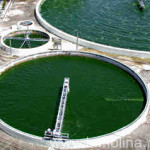 or it will fold under the attack of any disease. Detractors of algae dismiss it as pond scum, which is a laughable assertion stated out of shear ignorance. The nutritional content of Spirulina or Chlorella make them the most powerful foods in the world. No other foods could possibly compete with them. Of the nearly 70,000 species of algae that exist, most are quite nutritious. A few are toxic and a few are powerful nutraceuticals capable of supplying the body with nutrients unimagined by most other foods. A nutraceutical is any food that provides the body with the proper nutrition so the body can heal itself.
or it will fold under the attack of any disease. Detractors of algae dismiss it as pond scum, which is a laughable assertion stated out of shear ignorance. The nutritional content of Spirulina or Chlorella make them the most powerful foods in the world. No other foods could possibly compete with them. Of the nearly 70,000 species of algae that exist, most are quite nutritious. A few are toxic and a few are powerful nutraceuticals capable of supplying the body with nutrients unimagined by most other foods. A nutraceutical is any food that provides the body with the proper nutrition so the body can heal itself.
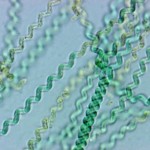 Spirulina and Chlorella are perfect whole foods, true superfoods . They have perfect compliments of protein (60%) carbohydrates (19%), fats (6%) bio-available minerals (8%). They are not extracts, concentrates or amalgams of vitamins and minerals that look good on paper such as the vitamin and mineral supplements that people generally believe to be healthy. In reality, the body does not absorb 90% of these vitamin supplements because they are dead, void of enzymes. On the other hand, eating Spirulina or Chlorella is like eating any other whole food such as a banana, apple or broccoli.
Spirulina and Chlorella are perfect whole foods, true superfoods . They have perfect compliments of protein (60%) carbohydrates (19%), fats (6%) bio-available minerals (8%). They are not extracts, concentrates or amalgams of vitamins and minerals that look good on paper such as the vitamin and mineral supplements that people generally believe to be healthy. In reality, the body does not absorb 90% of these vitamin supplements because they are dead, void of enzymes. On the other hand, eating Spirulina or Chlorella is like eating any other whole food such as a banana, apple or broccoli.
Algae are the oldest foods in the world. Fossil records show that Spirulina and 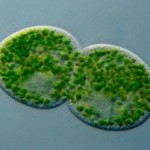 Chlorella have existed for billions of years essentially unchanged for all that time. They have both developed strategies of survival against harshly unfavorable conditions such as drought, radiation and even strong man-made poisons that have driven many other plant organisms to extinction.
Chlorella have existed for billions of years essentially unchanged for all that time. They have both developed strategies of survival against harshly unfavorable conditions such as drought, radiation and even strong man-made poisons that have driven many other plant organisms to extinction.
A tremendous amount of scientific research has been done on both Spirulina and Chlorella from universities and medical institutions from around the world. They have proven to be one of the best solutions world hunger problems. They are also used as feed for all kinds of live stock. Once tableted, they will last up to a year with refrigeration and even longer if vacuum-packed.
Which one should you take?
Even though the nutritional profile of Spirulina and Chlorella are quite similar they are completely different foods, as different as apples and oranges. Although many of the nutrients in these foods are the same, they will assimilate and benefit the body in different ways. This is also why we should attempt to get as many different types of foods into our diet as possible. The greater array of nutrients in any food, the more nutritious it is.
Spirulina is a nitrogen based blue green algae and has the predominant odor of seaweed. Chlorella is an oxygen based green algae that has the predominant odor of fresh grass. Chlorella gets its name from the high amount of chlorophyll in it, up to 10 times that of 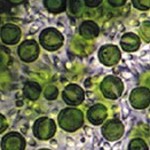 Spirulina which is itself quite high in chlorophyll. Chlorella belongs to a class of algae called chlorophyta.
Spirulina which is itself quite high in chlorophyll. Chlorella belongs to a class of algae called chlorophyta.
Spirulina is an extremely high energy food, great before or after a workout and is used widely for joint soreness and joint support. Chlorella is excellent for digestion, heavy-metal detoxification, and is a immune system builder. Therefore, the answer to the question as to which of these two algae should you take is that you should definitely have both of them in your diet.
DynoMill vs. Pressure-Release Chlorella
Protein, the Great Regulator
Spirulina and Chlorella are complete proteins meaning they provide the body with the eight essential amino acids, yet they go much further. They are 60% protein in the form of amino acids that are in the right ratio to one another. There is a lot of confusion and misinformation about protein, how much protein is actually in certain foods and what the protein actually consists of. For instance, most people assume 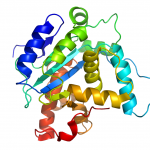 meat is comprised of 100% protein when it is only 19% protein on average. Meat only has eleven amino acids and is heavily weighted in only four of them, which means that the body is receiving a very lopsided version of protein. What the body needs is a broad array of amino acids that are in the correct proportion to one another such as Spirulina, Chlorella and even wheat grass. Wheat grass juice is only 20-22% protein (higher than meat) compared to over 60% for Spirulina and Chlorella, which is the highest amount of protein of any whole foods.
meat is comprised of 100% protein when it is only 19% protein on average. Meat only has eleven amino acids and is heavily weighted in only four of them, which means that the body is receiving a very lopsided version of protein. What the body needs is a broad array of amino acids that are in the correct proportion to one another such as Spirulina, Chlorella and even wheat grass. Wheat grass juice is only 20-22% protein (higher than meat) compared to over 60% for Spirulina and Chlorella, which is the highest amount of protein of any whole foods.
Dosages – How much to take. When to take it. ( It is NOT complicated)
It is NOT complicated)
Chlorella: A maintenance dosage of Chlorella is about 3 – 5 grams per day. Although you will not see significant changes taking such a small amount of whole food, your body will be getting a broad array of nutrients unlike it has seen before. Since Chlorella is a detoxifying whole food, not a concentrate or extract, a person can eat as much as they desire without any fear of it becoming potentially toxic in any way.
Chlorella is best taken before a meal with probiotics, our friendly bacteria ( Acidophilus and Bifidus ). Chlorella causes probiotics to multiply at four times the rate of normal.
Maintenance Dosage: 3 – 5 grams/day
Significant Part of the Diet: 6 – 10 grams/day
Immune System Builder: 11 – 14 grams/day
Primary Source of Protein : 12 – 19 grams/day
Healing Purposes & Heavy Metal Detoxification: 20 – 30+ grams/day
Best before a meal to aid with digestion.
Spirulina: A maintenance dosage of Spirulina is 3 — 5 grams per day. Although their nutritional profile may appear to be quite similar, Spirulina and Chlorella are completely different foods. Spirulina is great before a physical workout. I take 5 – 6 grams religiously before any kind of physical training. Stamina, endurance and recovery are significantly improved with Spirulina. After a strenuous workout where the body is pushed to its limits, an additional 10 – 20 grams should be taken during the following 24 hours to rebuild the body and muscle tissue that has been torn down.
Spirulina should also be taken 15 – 30 minutes before a meal to help prepare the stomach for proper digestion since it also helps accelerate the reproductive rate of probiotics.
Maintenance Dosage: 3 – 5 grams/day
Significant Part of the Diet: 6 – 10 grams/day
Immune System Builder: 11 – 14 grams/day
Primary Source of Protein : 12 – 19 grams/day
Healing Purposes: 20 – 25+ grams/day
Also great before a workout.


The power of these supergreens are epic! Get lots of them, in my opinion.
Our bodies are designed to be fueled by greens! 🙂